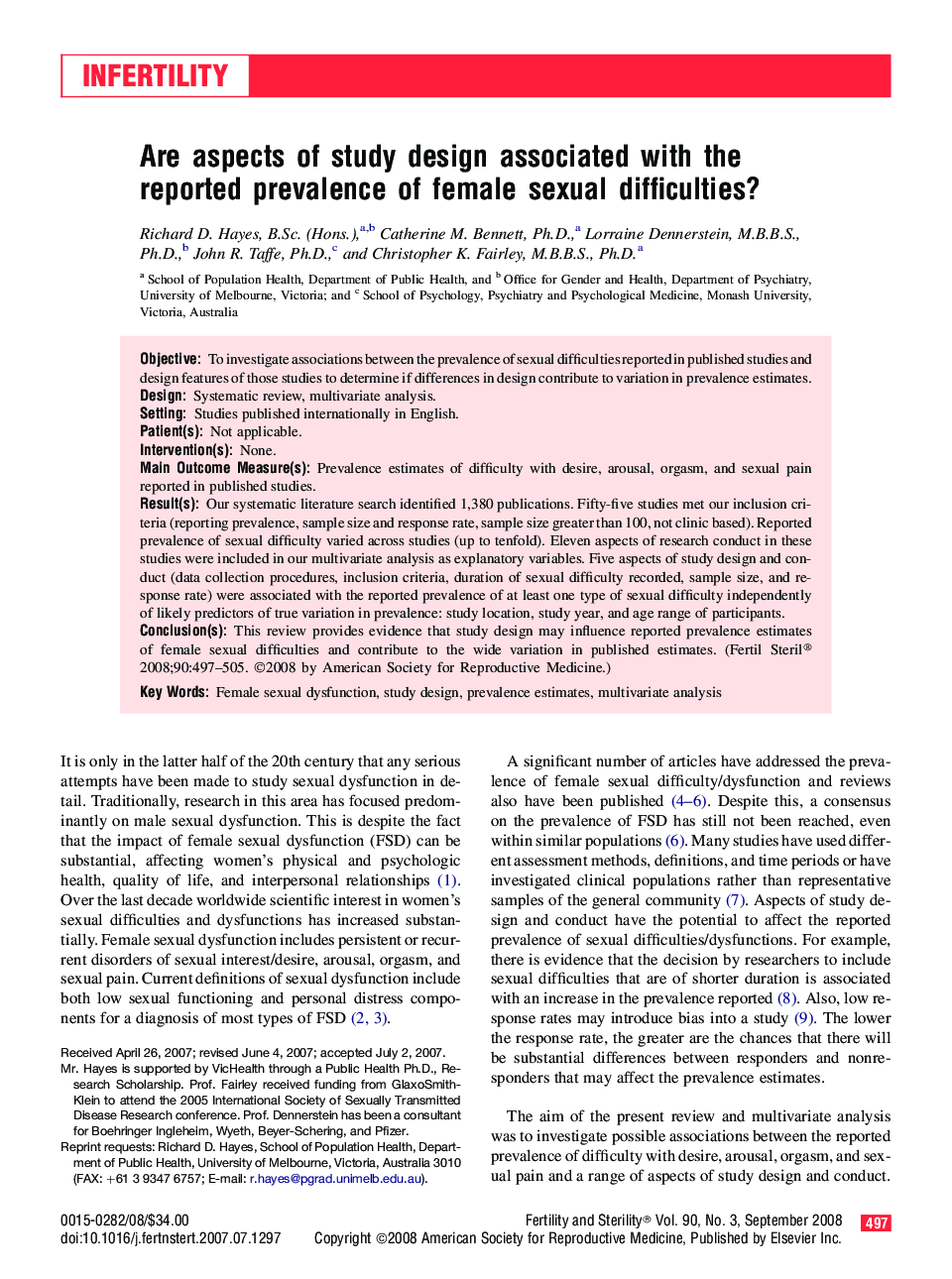| Article ID | Journal | Published Year | Pages | File Type |
|---|---|---|---|---|
| 3939803 | Fertility and Sterility | 2008 | 9 Pages |
ObjectiveTo investigate associations between the prevalence of sexual difficulties reported in published studies and design features of those studies to determine if differences in design contribute to variation in prevalence estimates.DesignSystematic review, multivariate analysis.SettingStudies published internationally in English.Patient(s)Not applicable.Intervention(s)None.Main Outcome Measure(s)Prevalence estimates of difficulty with desire, arousal, orgasm, and sexual pain reported in published studies.Result(s)Our systematic literature search identified 1,380 publications. Fifty-five studies met our inclusion criteria (reporting prevalence, sample size and response rate, sample size greater than 100, not clinic based). Reported prevalence of sexual difficulty varied across studies (up to tenfold). Eleven aspects of research conduct in these studies were included in our multivariate analysis as explanatory variables. Five aspects of study design and conduct (data collection procedures, inclusion criteria, duration of sexual difficulty recorded, sample size, and response rate) were associated with the reported prevalence of at least one type of sexual difficulty independently of likely predictors of true variation in prevalence: study location, study year, and age range of participants.Conclusion(s)This review provides evidence that study design may influence reported prevalence estimates of female sexual difficulties and contribute to the wide variation in published estimates.
